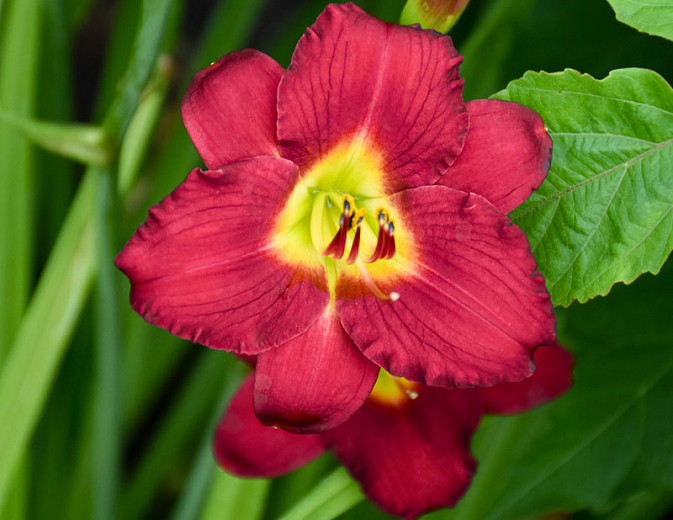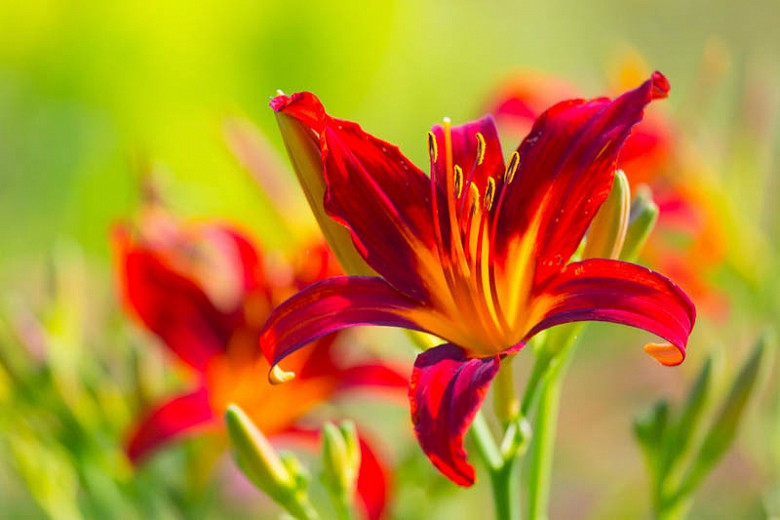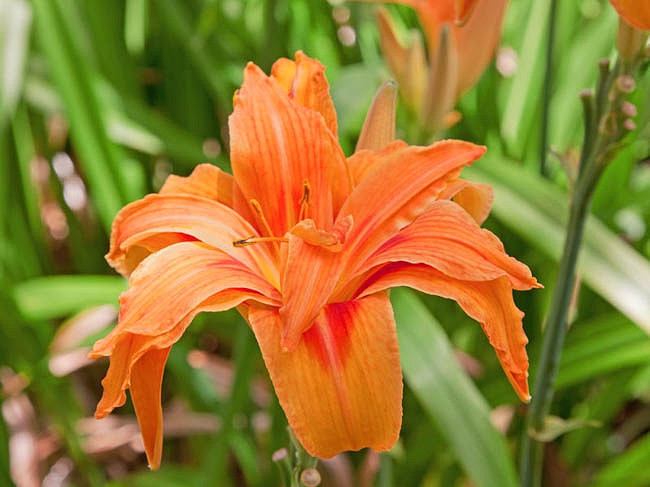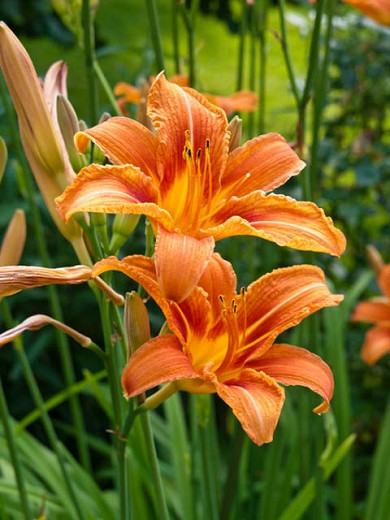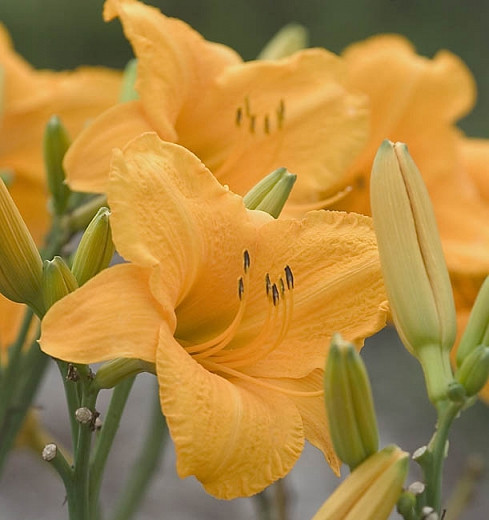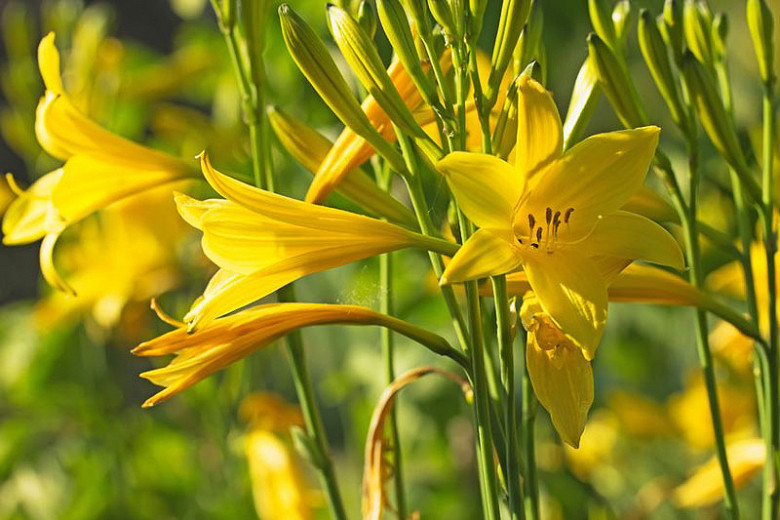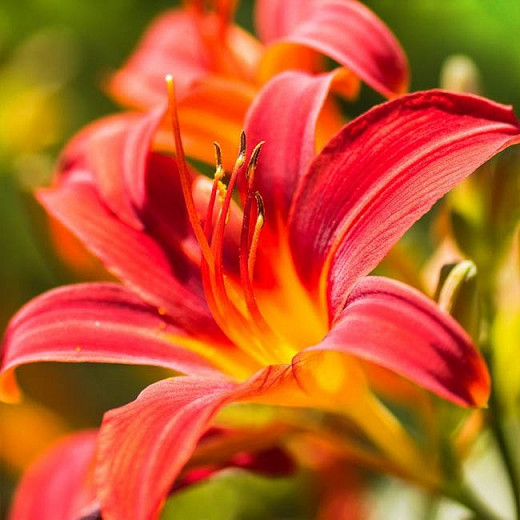Hemerocallis Pardon Me (Reblooming Daylily)
Among the most popular reblooming Daylilies, award-winning Hemerocallis 'Pardon Me' is quite a catch! Why? It is compact, vigorous, fragrant, and enjoys profuse blooms over an extremely long blooming period. This Daylily produces masses of rich, velvety, burgundy-red blossoms with greenish-golden throats, atop mounds of arching, blade-like leaves. Each flower, up to 2.75 in. wide (7 cm), typically lasts no more than 24 hours (thus the common name 'Daylily'). Night-blooming, this Daylily opens late in the afternoon and stays open throughout the evening until the morning. If you spend time in the garden late in the day, this Hemerocallis is the perfect daylily for you! Blooming from mid to late summer, with a potential repeat in the fall, this midseason diploid Daylily is dormant (deciduous).
- Grows up to 18 in. tall (45 cm) and spreads via rhizomes to 18-24 in. (45-60 cm).
- An ideal choice for shrub borders or perennial beds, as ground covers on slopes or in containers near the patio.
- Often called the 'perfect perennial' because of its numerous qualities: showy flowers, drought tolerance, heat stress immunity, ability to grow in most hardiness zones, and low care requirements, this Daylily is a remarkable and stunning addition to the garden.
- Thrives in full sun to part sun in average, moist, but well-drained soils. While it performs well in a wide range of soils, fertile loam is preferred. Tolerates heat and summer humidity, but thorough watering is required to ensure its foliage remains attractive.
- Daylilies attract butterflies and hummingbirds but are toxic to cats. Rabbits tend to avoid daylilies.
- No serious pest or disease issues. Keep an eye out for mites, aphids, thrips, or daylily rust.
- The best time to plant Daylilies is in early fall or early spring.
- After flowering, remove spent blooms and seedpods to improve the appearance and encourage rebloom. When all the flowers on a scape are finished, cut off the scape close to ground level. Remove dead foliage from daylilies as they die back in the fall.
- Bred by Apps in 1982, it won multiple prestigious awards including the Award of Merit of the American Daylily Society in 1987.
Requirements
| Hardiness | 3 – 9 |
|---|---|
| Heat Zones | 2 – 11 |
| Climate Zones | 1, 2, 3, 4, 5, 6, 7, 8, 9, 10, 11, 12, 13, 14, 15, 16, 17, 18, 19, 20, 21, 22, 23, 24, H1, H2 |
| Plant Type | Perennials |
| Plant Family | Hemerocallis – Daylilies |
| Exposure | Full Sun, Partial Sun |
| Season of Interest | Summer (Mid,Late)Fall |
| Height | 1' – 2' (30cm – 60cm) |
| Spread | 1' – 2' (30cm – 60cm) |
| Spacing | 18″ – 24″ (45cm – 60cm) |
| Water Needs | Average |
| Maintenance | Low |
| Soil Type | Chalk, Clay, Loam |
| Soil pH | Acid, Alkaline, Neutral |
| Soil Drainage | Moist but Well-Drained, Well-Drained |
| Characteristics | Fragrant, Plant of Merit, Showy |
| Tolerance | Drought, Rabbit |
| Attracts | Butterflies, Hummingbirds |
| Garden Uses | Beds and Borders, Edging, Ground Covers, Patio and Containers |
| Garden Styles | City and Courtyard, Informal and Cottage, Prairie and Meadow, Traditional Garden |
